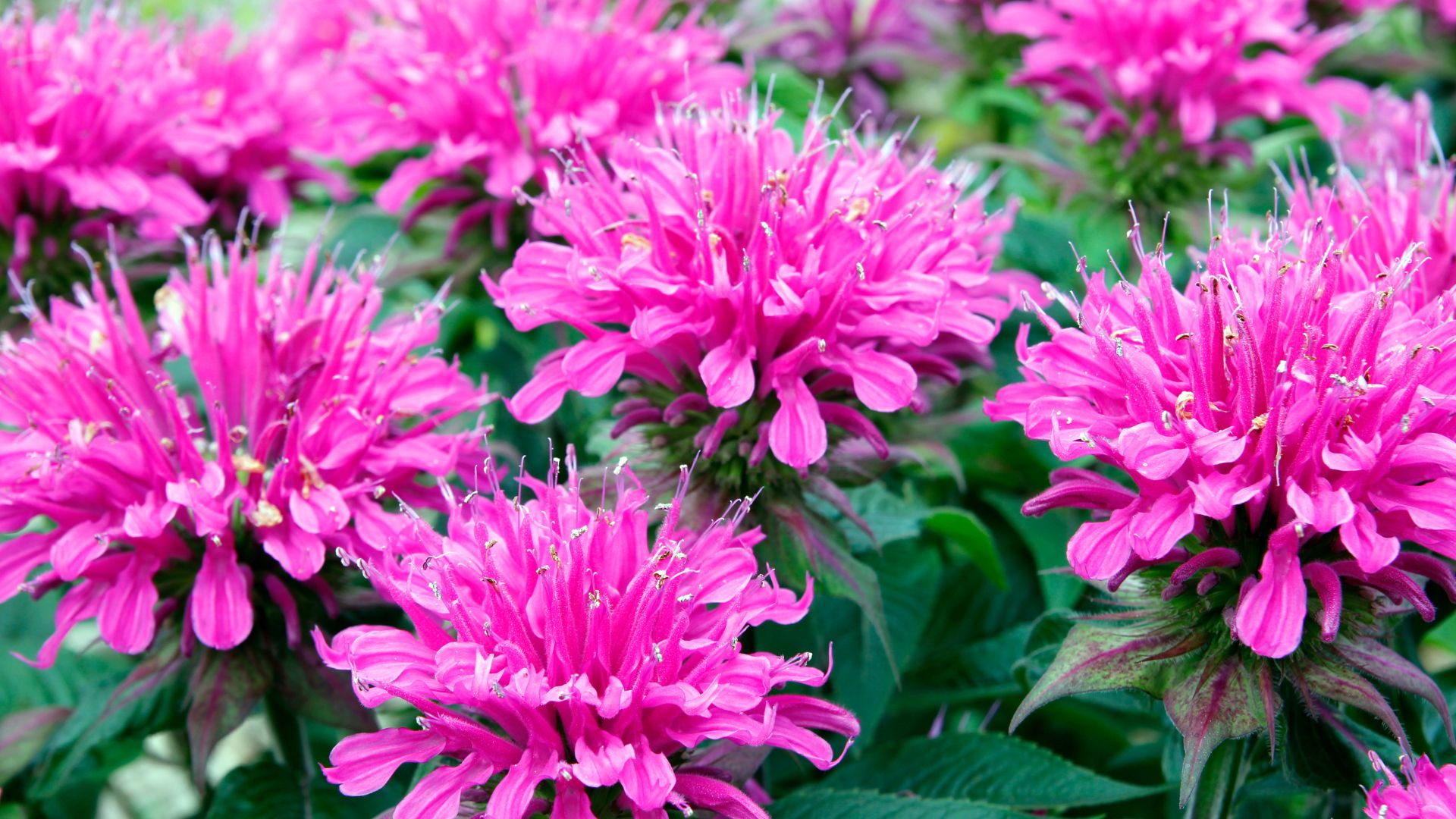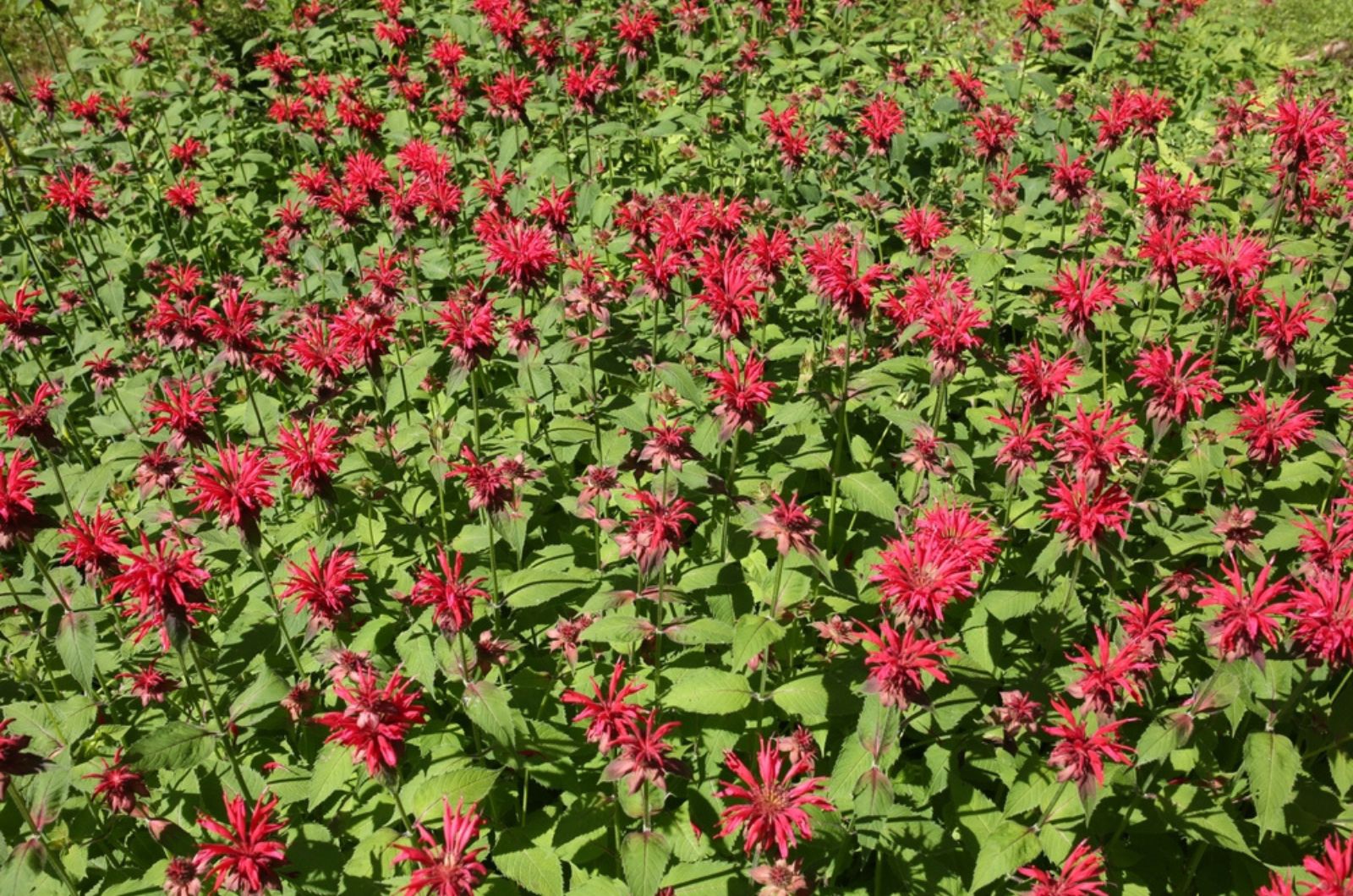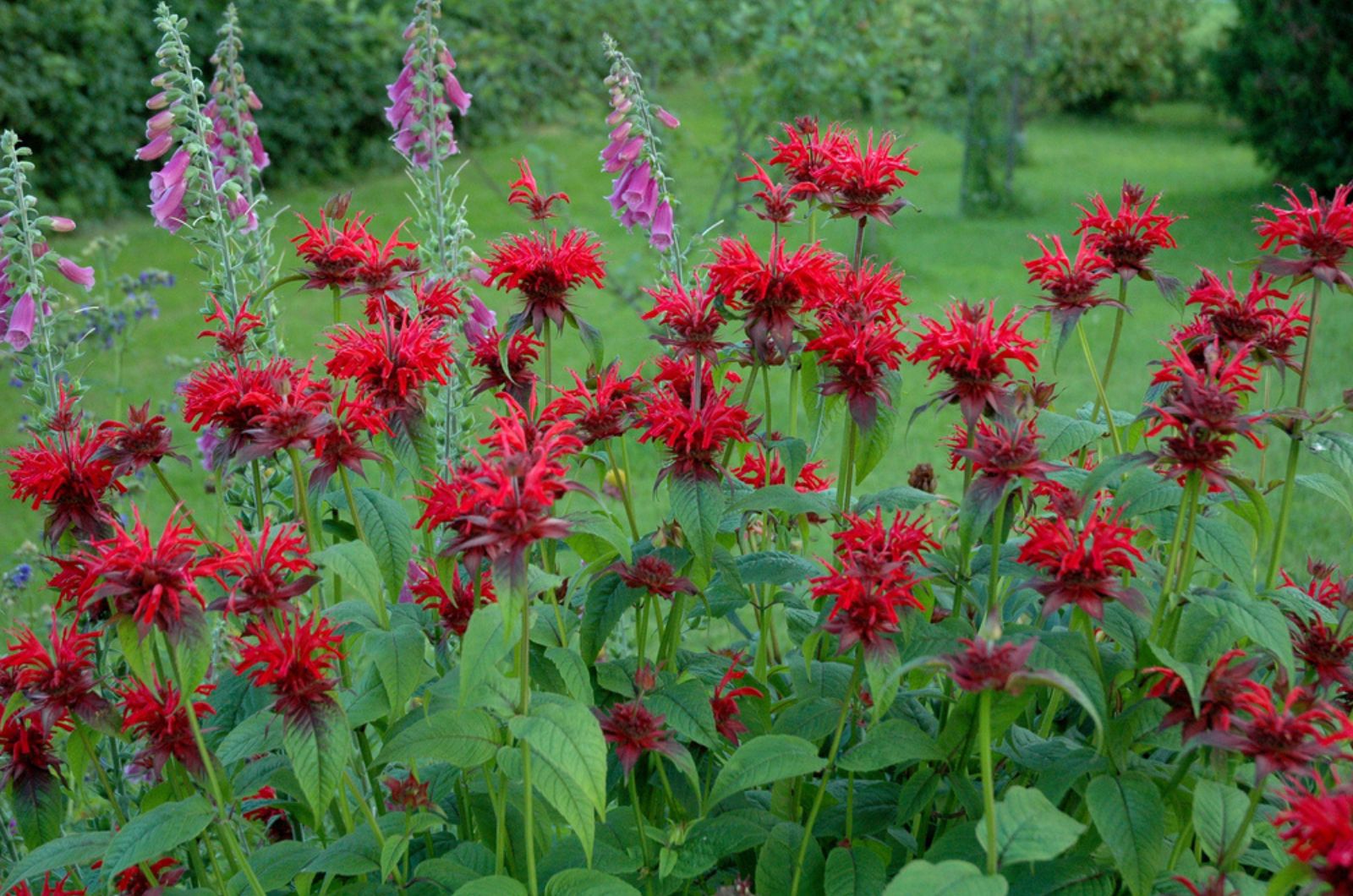Ah, bee balm! This delightful, colorful plant is a magnet for bees, butterflies, and hummingbirds, making it a favorite in my garden. But did you know that not all plants play nice with bee balm?
I learned this the hard way once my poor bee balm started to wither and my garden was thrown off balance. Turns out, bee balm has some finicky neighbors that just don’t get along.
After some trial and error (and a few wilted plants), I finally figured out what to avoid planting near my beloved plant.
Ready to learn from my mistakes and keep your bee balm happy?
Let’s get started!
Peppermint Doesn’t Get Along With Bee Balm
Mint is known for growing like a champ in almost any soil or sun conditions. However, bee balm is also a part of the mint family, and it can be just as aggressive!
Bee balm will stretch its roots and gobble up nearby resources, and its minty relatives, peppermint (Mentha piperita L.) and spearmint (Mentha spicata), aren’t shy about doing the same.
I once planted peppermint near my bee balm, thinking they’d make a lovely duo. Big mistake! They both spread like wildfire, competing for nutrients and space. Soon, my garden turned into a battlefield, with both plants stunted and struggling.
It’s not just the mint family that’s aggressive, though. Many plants can be invasive, depending on your region.
So, before you plant anything near your pollinator flower, do some research. You’ll save yourself a lot of headaches and keep your garden flourishing.
Also read: 5 Reasons Why Bee Balm Should Be Grown In Every Backyard
Some Veggies Might Compete With Your Bee Balm
You also want to be careful about planting veggies next to your be balm, especially heavy feeder plants.
Plants that are heavy feeders demand a lot of essential soil nutrients like nitrogen, phosphorus, and potassium. As a result, they tend to absorb most of these nutrients from the soil, which can negatively affect neighboring plants like bee balm.
Several vegetable plants, including tomatoes, corn, and squash, belong to this category. From my experience, bee balm will get nowhere alongside these plants because they hinder its growth and development.
Grow These Companion Plants Instead
Yep, companion planting is still being practiced today, even though it is a centuries old agricultural tradition. This simply means you grow plants next to each other to create a symbiotic relationship.
These relationships can make plants healthier and help them grow better or, with bee balm, make a crop more attractive to pollinators.
Black-eyed Susans, otherwise known as Rudbeckia hirta, are adored by pollinators, but they can become too aggressive when planted alone. However, when paired with a competitive plant, they can be kept in check.
Golden groundsel (Packera aurea) is another plant that attracts pollinators and thrives alongside fast-growing plants, helping to manage less aggressive ones.
You can mix it up a bit and put pots and planters in different places. Planter boxes are great for ensuring each plant gets the proper amount of space, nutrients, soil, and optimal growing conditions.
I experimented with having a pollinator garden in one box and a flourishing veggie crop in another, and it worked like a charm!
You can also consider planting light-feeding veggies alongside bee balm, as these won’t present the same challenges as heavy feeders – turnips, peas, lamb’s lettuce, beans, and chickpeas are some great options of these light feeder veggies.
Honestly, gardening with bee balm has taught me a lot. I figured that not all plants get along with this wonderful flower and I should opt for more companion plants.
Remember, avoid aggressive spreaders like mint and heavy feeders like tomatoes and corn. To make things work, use planter boxes and choose compatible companions instead!
Also read: Grow These 20 Nectar-Rich Native Plants If You Want To Attract Hummingbirds To Your Yard



